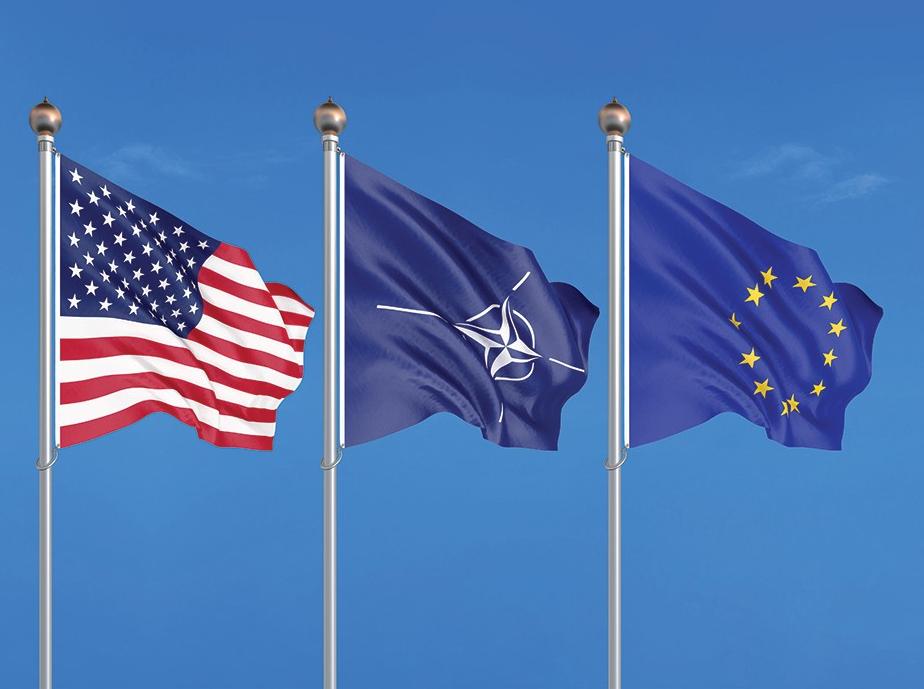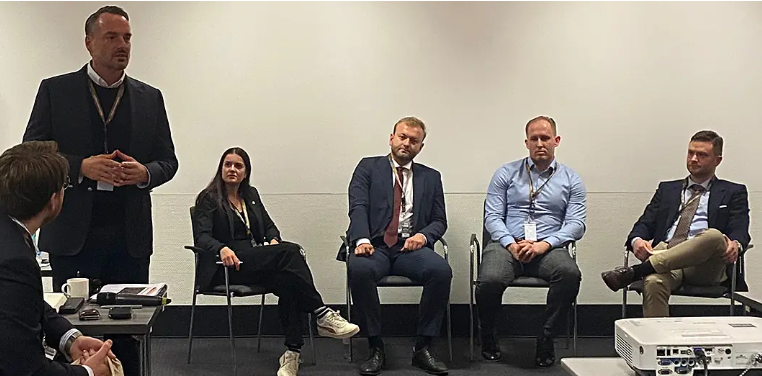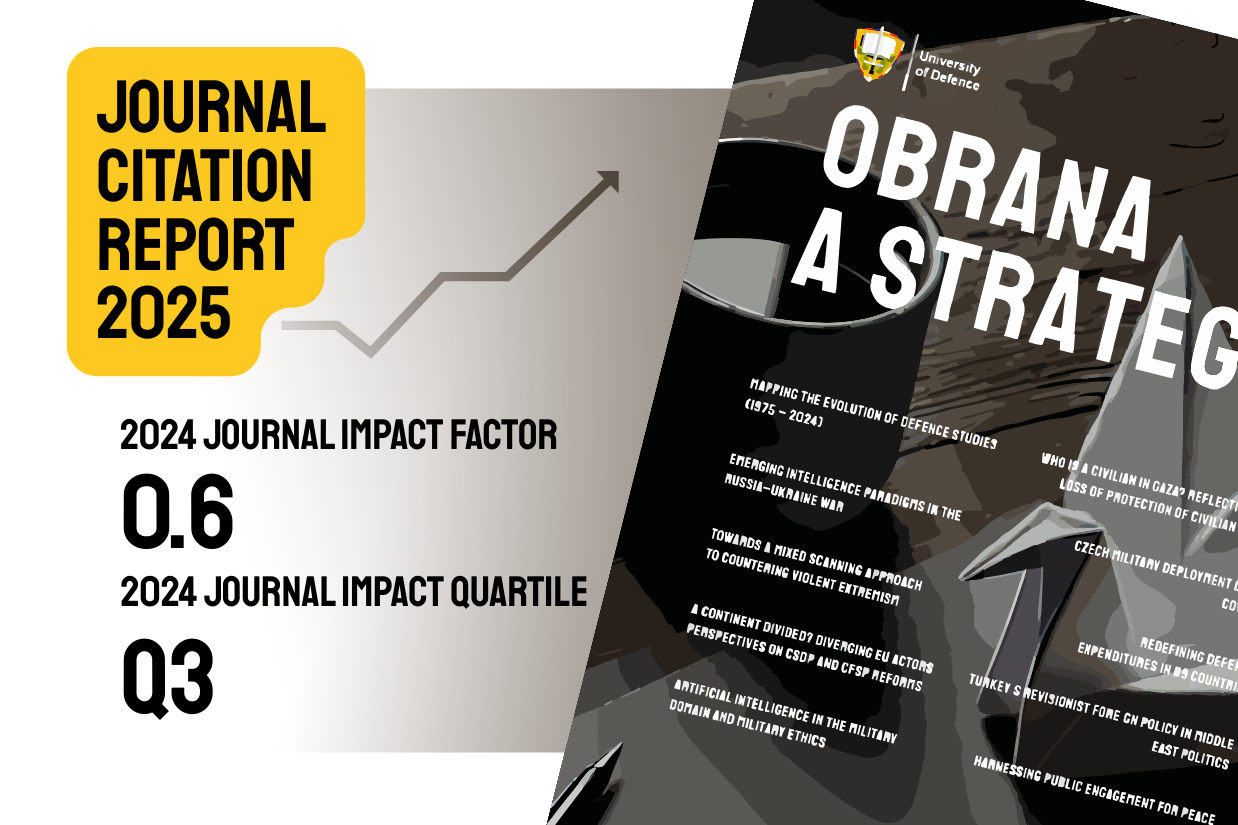Zdeněk Petráš, Ph.D., from the Centre for Security and Military Strategic Studies (CSMSS), comments on articles addressing the conclusions of the NATO Summit in The Hague, published on the official website of the EU Institute for Security Studies (EUISS).
The EUISS is an element within the EU’s organisational structure, directly linked to other EU institutions. It is mandated to conduct research in the field of security and defence, thereby contributing to shaping the EU’s Common Foreign and Security Policy. Due to this role, the EUISS is headed by the Deputy to the President of the European Commission and High Representative of the EU for Foreign Affairs and Security Policy, Kaja Kallas. CSMSS cooperates with EUISS within the NESSI project (Network of European Security Studies Initiative), which brings together nearly twenty institutions from European countries dealing with defence and security issues. The articles forming the basis of the author’s commentary are NATO after the Hague summit: Building the European pillar and Fit for purpose? Reforming NATO in the age of Trump 2.0.
NATO after The Hague Summit: Building the European Pillar
Following the June summit in The Hague, NATO finds itself at a crossroads—not only because of the growing Russian threat to Europe and the deteriorating global security environment, but also due to shifting strategic priorities of the United States. Given that President Trump demanded a significant increase in defence spending and even threatened to withdraw from the Alliance, European countries are preparing to shoulder a considerably larger share of the transatlantic burden. The real test, however, lies in whether NATO can transform the political commitments made at The Hague into credible military capabilities—primarily through the NATO Defence Planning Process (NDPP).
One of the summit’s significant moments was the successful avoidance of disruption from U.S. President Donald Trump—whether through an early departure or further questioning of the U.S. commitment to NATO as enshrined in Article 5 of the Washington Treaty. This concern arose before the summit when Trump evasively answered a direct question on defending allies, remarking that „it depends on interpretation.“ This statement left uncertainty about the future of collective defence—the cornerstone of NATO.
Despite this, Trump expressed support for defending allies and signed the summit declaration, in which NATO leaders reaffirmed their unwavering commitment to collective defence in the Euro-Atlantic area, including Europe.
However, some analysts point out that strengthening the European pillar of NATO could backfire. The more European allies plan to replace the U.S. presence, the more arguments they give to policymakers in Washington to justify withdrawal. This concern may be slowing efforts to openly reform the Alliance. Maintaining a strong bond between Europe and North America remains existentially important for NATO.
Increasing Defence Spending Is Not Sufficient
The Hague summit—NATO’s first since Trump’s return to the White House—achieved two main goals. Firstly, allies agreed on a new baseline for defence spending. Experts had long warned that the 2% GDP defence investment target agreed at the 2014 Wales summit is insufficient to meet current deterrence capability needs. Trump sees the new spending agreement as a cornerstone of his transatlantic policy. The summit’s main topic was thus adopting new spending benchmarks: 3% of GDP for direct military capabilities and an additional 1.5% for broader security concerns, such as cyber defence and resilient civil infrastructure—bringing the total to 5%, a figure Trump mentioned at the beginning of his second term.
But increasing defence spending alone isn’t enough. NATO allies must decide which capabilities need strengthening. Identifying these is a key outcome of the NDPP, a four-year cycle essential for developing the military capabilities required to fulfil NATO’s collective defence tasks. In line with political guidance from 2023, NATO strategic commands identified “minimum capability requirements”—a set of forces and abilities needed for planned operations. These capability targets are then distributed among allies through a defined mechanism. The acceptance of these targets was the summit’s second most significant outcome, though largely hidden from public view due to its classified nature. European allies are expected to agree to increase overall capability targets by 30%, necessary to meet new regional defence plans for the Euro-Atlantic area. However, this increase will not be distributed evenly. The U.S. had already signalled plans to reduce its commitments to European conventional deterrence. Thus, the main burden will fall on European allies, along with Canada and Turkey.
This ambitious goal will bring significant political and economic challenges. For instance, Poland is approaching the target with 4.7%, while countries like Spain or Slovenia have expressed reservations about its feasibility. Reaching 5% would mean hundreds of billions of dollars annually, requiring careful consideration of fiscal limits and public support. While dividing the total figure may give member states flexibility, transparency, and unified reporting standards will be key. Still, analysts from EUISS argue that achieving this goal would require major changes to national budgets and priorities, and that spending 5% of GDP on defence is politically and economically unfeasible for most NATO members. Countries currently below 2% will need deep structural reforms to meet the target.
European NATO states face a key strategic question: Should they continue assuming the U.S. will always provide the backbone of NATO capabilities and focus on building a larger modern fighting force (tanks, missiles, aircraft)?Or should they also invest in parallel command and control structures and other capabilities currently provided by the U.S., which Washington may continue to supply? The second option is more complicated and could cause short-term friction with Washington due to perceived duplication. However, in the long term, it could create a stronger foundation for a true European pillar within NATO and strengthen the transatlantic alliance.
Is the Euro-Atlantic Bond Still Strong?
NATO’s functioning is built on two assumptions that may no longer hold true. If the Alliance and political leaders don’t systematically address them, maintaining a strong and credible deterrent—especially in Europe—will become harder.
First assumption: The U.S. retains a key role in deterring threats and defending Europe.
NATO’s defence model relies on the U.S. providing large numbers of forces and assets—including over 80,000 U.S. troops stationed in the area covered by U.S. European Command (EUCOM). NATO’s command structure is tied to U.S. leadership. EUCOM’s commander is also NATO’s Supreme Allied Commander Europe (SACEUR), and U.S. admirals rotate as commanders of key commands in Naples (Joint Force Command), Ramstein (Allied Air Command), and Izmir (Allied Land Command). The U.S. also supplies critical capabilities: intelligence, surveillance, strategic airlift, missile defence, etc. For decades, European countries relied on U.S. support—even in operations outside NATO territory.
However, Trump’s administration signalled its intent to drastically reduce U.S. contributions, challenging this longstanding assumption. In February 2025, Secretary Hegseth stated that strategic realities prevent the U.S. from assuming primary responsibility for Europe’s conventional deterrence. EUCOM may face budget cuts, potentially leading to troop reductions in Europe. U.S. forces might also be redeployed from the Euro-Atlantic to the Indo-Pacific. Though fears of a total U.S. withdrawal have eased, the Pentagon continues to reassess its global defence posture, and significant cuts in Europe remain possible. Even limited reductions raise European concerns, especially as Washington aims to prioritise the Indo-Pacific. European allies must now plan for a future where defending Europe falls primarily on their shoulders, with reduced U.S. support. That said, in areas like nuclear deterrence, the U.S. may prefer to remain involved—especially if the alternative is the development of national nuclear capabilities in Europe. This highlights how deeply embedded the U.S. presence has been in Europe’s post-WWII security.
A positive signal is the White House’s clear effort to maintain influence in NATO’s top command. Appointing U.S. General Alexus Grynkewich as Supreme Allied Commander Europe signals a desire to reinforce operational leadership and decision-making. As NATO’s first Secretary General, Lord Ismay, said, the Alliance’s original purpose was to “keep America in Europe.” That remains true today: Europe in the 21st century still needs an active U.S. role to maintain security stability.
The NATO Summit as a Boost for the European Defence Industry
Building NATO’s European pillar will require not only higher defence spending but also much more efficient cooperation among European countries. The EU and its recent initiatives could play a key role. First, the EU can offer financial incentives for dual-use infrastructure, support joint development and procurement of military equipment, and strengthen the defence industry’s production and innovation capacity. The EU could provide a political impulse to develop European strategic capabilities—especially those requiring multinational involvement. A closer NATO-EU partnership could offer a forum for open discussion and help form coalitions around projects to overcome key defence gaps. If any sector should welcome the outcome of the Hague summit, it is the European defence industry. Europe must invest in boosting domestic defence production. This is a medium-to-long-term challenge. While European arms manufacturers produce high-quality equipment, they typically do so in small volumes and slowly. Increasing production—especially of air and missile defence systems—should be a political priority. European allies’ defence commitments represent an investment of hundreds of billions into the European defence industry. However, the U.S. defence industry will also benefit, as European NATO members will likely continue purchasing American-made equipment.
Author: Zdeněk Petráš, Ph.D.




